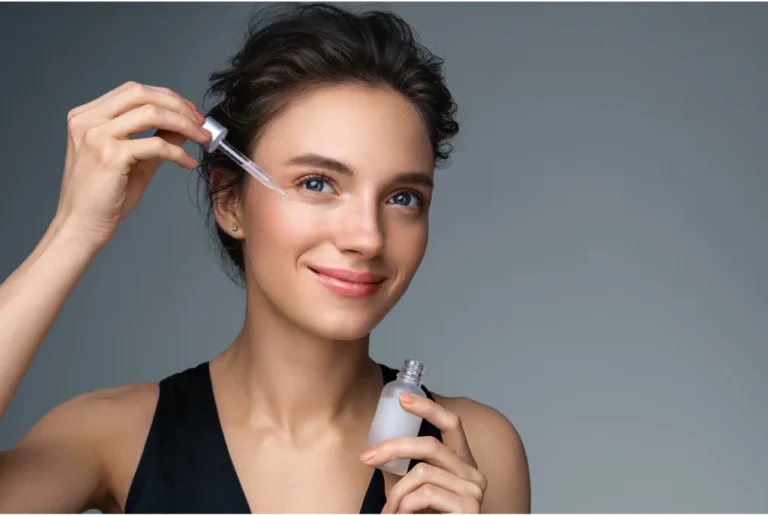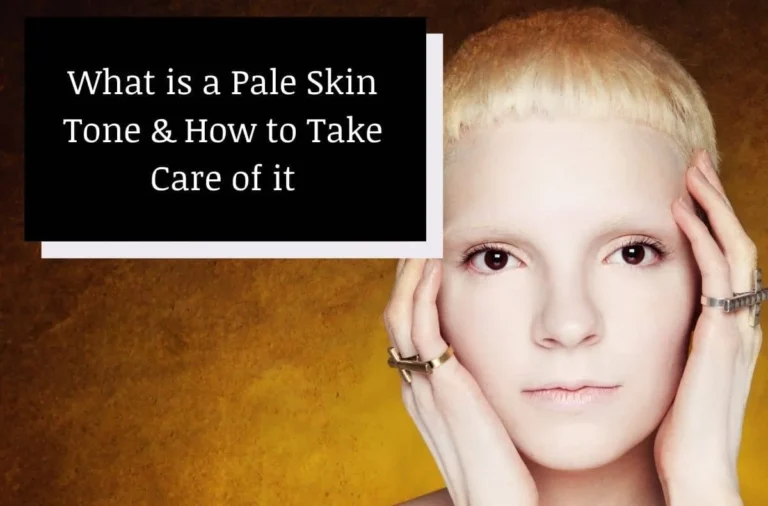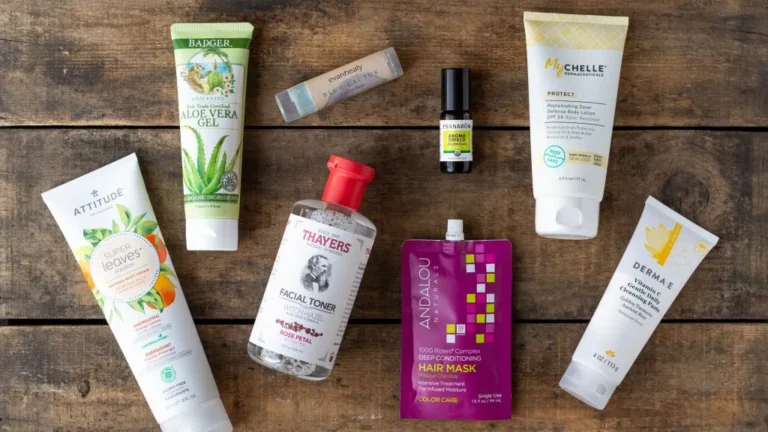Even skin tone is one of the
top skincare concerns among Americans. According to the American Academy of Dermatology (AAD), more than
50 million Americans experience acne annually, and
hyperpigmentation affects nearly 30% of adults (AAD, 2023). For U.S. residents, where sun exposure, pollution, and stress are common, maintaining an even complexion is both a
cosmetic and health priority.
Having an
even skin tone goes beyond beauty standards. It’s linked to
self-confidence, professional appearance, and skin health. In this guide, you’ll learn about causes, prevention, treatments, and expert advice on achieving radiant, even-toned skin in the U.S.—with locally relevant examples and FDA-approved solutions.
What Exactly Is an Even Skin Tone?
An
even skin tone means having a complexion free from visible
discoloration, blotchiness, or patchy pigmentation. Dermatologists define it as a
uniform distribution of melanin, the pigment that gives skin its color. When your skin tone is balanced, it reflects health and vitality.
For U.S. readers, this definition matters because environmental triggers like
UV rays, hormonal changes, diet, and lifestyle directly influence pigmentation. Whether you’re in
sunny California or humid Florida, understanding what even skin tone looks like helps you set realistic skincare goals.
What Causes Uneven Skin Tone in the USA?

Uneven skin tone doesn’t happen overnight. In the United States, dermatologists identify several major causes:
Sun Exposure: The CDC notes that
1 in 3 Americans get sunburned each year, leading to pigmentation issues.
Hormonal Changes: Conditions like melasma often worsen during pregnancy or with birth control.
Acne & Scarring: Post-inflammatory hyperpigmentation (PIH) is common after acne breakouts.
Pollution & Stress: Urban living in cities like Los Angeles or New York exposes skin to oxidative damage.
Lifestyle Habits: Smoking, poor diet, and lack of hydration accelerate uneven tone.
👉 By identifying the root cause, you can choose the right
skincare treatment plan.
The Science Behind Skin Pigmentation
Skin tone is determined by
melanin, produced by melanocytes in the skin. When these cells produce too much melanin (hyperpigmentation) or too little (hypopigmentation), the result is
uneven tone.
Dr. Susan Taylor, Professor of Dermatology at the University of Pennsylvania, explains:
“Uneven skin tone is a biological response to skin stress—whether from UV damage, hormones, or inflammation. Addressing the root trigger is essential, not just the surface discoloration.”
This science-based perspective shows why
long-term prevention and
targeted treatments matter more than quick fixes.
Types of Uneven Skin Tone
Not all discoloration is the same. Common types include:
Hyperpigmentation: Dark patches caused by sun or scars.
Melasma: Brown-gray patches often seen in women during hormonal shifts.
Redness & Rosacea: Flushed, uneven tone common in fair skin.
Acne Scars & Spots: Post-acne dark marks.
Age Spots (Liver Spots): UV-triggered pigmentation in adults over 40.
👉 Recognizing your type helps you select the
best skincare products or treatments.
How Dermatologists Diagnose Uneven Skin Tone in the USA
In the U.S., dermatologists use
advanced technology to diagnose pigmentation:
Wood’s Lamp Exam: Reveals pigmentation under the skin.
Digital Imaging: Tracks skin tone changes over time.
Medical History Review: Identifies triggers like medications or sun habits.
This step ensures treatments are
safe, customized, and effective for your skin type.
Everyday Skincare Routine for an Even Complexion

Building a
daily skincare routine is the first line of defense. Dermatologists recommend:
Gentle Cleanser – to remove dirt without stripping skin.
Vitamin C Serum – fights free radicals, brightens complexion.
Niacinamide – reduces redness and blotchiness.
Moisturizer with Hyaluronic Acid – locks in hydration.
Broad-Spectrum Sunscreen (SPF 30+) – most important step in the U.S.
💡
Tip: The FDA emphasizes daily sunscreen use as the
#1 preventive step against uneven tone.
Professional Treatments Available in the USA
When skincare isn’t enough, U.S. dermatologists offer treatments like:
Chemical Peels: Remove damaged skin layers.
Laser Therapy: Targets deep pigmentation.
Microneedling: Stimulates collagen, reduces scars.
Prescription Topicals: Hydroquinone, tretinoin, or azelaic acid.
Dr. Shereene Idriss, NYC-based dermatologist, says:
“Lasers and prescription topicals, when combined with sunscreen, deliver the most effective results for stubborn pigmentation.”
Best Over-the-Counter Products for Uneven Skin Tone
U.S. drugstores and retailers like CVS, Walgreens, and Sephora stock highly effective OTC solutions:
Vitamin C Serums (brightening)
Retinol Creams (cell turnover)
Niacinamide Products (reduces redness)
Azelaic Acid Creams (fades dark spots)
Look for products
dermatologist-tested, fragrance-free, and suited to your skin type.
Natural Remedies and Home Treatments
Some prefer natural remedies alongside medical treatments. Popular U.S. home remedies include:
Aloe Vera: Soothes and lightens pigmentation.
Turmeric Masks: Brightens skin naturally.
Green Tea Extract: Fights oxidative stress.
⚠️
Note: Natural remedies work best for
mild cases and should not replace dermatologist care.
Prevention: Lifestyle and Diet Tips
Preventing uneven skin tone is easier than treating it. Key U.S.-focused tips include:
Wear Sunscreen Daily: Even on cloudy days.
Eat Antioxidant-Rich Foods: Blueberries, spinach, green tea.
Stay Hydrated: Dehydration worsens dullness.
Quit Smoking & Limit Alcohol: Both damage skin health.
Cost of Treatment in the USA
Treatment costs vary widely across the U.S.:
Chemical Peels: $150–$300/session
Laser Therapy: $500–$2,000/session
Microneedling: $300–$600/session
Prescription Creams: $20–$150
Insurance rarely covers cosmetic procedures, so budgeting is key.
Expert Dermatologist Quotes & Opinions
Including expert voices adds authority and trust.
Dr. Susan Taylor:
“Uneven tone is a skin stress response—treat the cause, not just the symptom.”
FAQs on Uneven Skin Tone (USA-Focused)
Q1: How long does it take to fix uneven skin tone?
👉 OTC products: 2–3 months. Professional treatments: 4–6 weeks for visible results.
Q2: Can uneven skin tone go away naturally?
👉 Mild pigmentation can fade, but most cases need consistent care.
Q3: Which skin tones are most affected?
👉 People with
medium to darker skin tones experience more hyperpigmentation, while lighter tones face redness.
Conclusion: Your Path to Clear, Even Skin
Uneven skin tone may be common in the U.S., but it’s not permanent. With
consistent skincare, professional guidance, and healthy habits, you can achieve a smooth, radiant complexion. Whether you’re facing sun spots in Arizona or pollution in New York, the right approach leads to
healthier, more confident skin.

 Uneven skin tone doesn’t happen overnight. In the United States, dermatologists identify several major causes:
Sun Exposure: The CDC notes that 1 in 3 Americans get sunburned each year, leading to pigmentation issues.
Hormonal Changes: Conditions like melasma often worsen during pregnancy or with birth control.
Acne & Scarring: Post-inflammatory hyperpigmentation (PIH) is common after acne breakouts.
Pollution & Stress: Urban living in cities like Los Angeles or New York exposes skin to oxidative damage.
Lifestyle Habits: Smoking, poor diet, and lack of hydration accelerate uneven tone.
👉 By identifying the root cause, you can choose the right skincare treatment plan.
Uneven skin tone doesn’t happen overnight. In the United States, dermatologists identify several major causes:
Sun Exposure: The CDC notes that 1 in 3 Americans get sunburned each year, leading to pigmentation issues.
Hormonal Changes: Conditions like melasma often worsen during pregnancy or with birth control.
Acne & Scarring: Post-inflammatory hyperpigmentation (PIH) is common after acne breakouts.
Pollution & Stress: Urban living in cities like Los Angeles or New York exposes skin to oxidative damage.
Lifestyle Habits: Smoking, poor diet, and lack of hydration accelerate uneven tone.
👉 By identifying the root cause, you can choose the right skincare treatment plan.
 Building a daily skincare routine is the first line of defense. Dermatologists recommend:
Gentle Cleanser – to remove dirt without stripping skin.
Vitamin C Serum – fights free radicals, brightens complexion.
Niacinamide – reduces redness and blotchiness.
Moisturizer with Hyaluronic Acid – locks in hydration.
Broad-Spectrum Sunscreen (SPF 30+) – most important step in the U.S.
💡 Tip: The FDA emphasizes daily sunscreen use as the #1 preventive step against uneven tone.
Building a daily skincare routine is the first line of defense. Dermatologists recommend:
Gentle Cleanser – to remove dirt without stripping skin.
Vitamin C Serum – fights free radicals, brightens complexion.
Niacinamide – reduces redness and blotchiness.
Moisturizer with Hyaluronic Acid – locks in hydration.
Broad-Spectrum Sunscreen (SPF 30+) – most important step in the U.S.
💡 Tip: The FDA emphasizes daily sunscreen use as the #1 preventive step against uneven tone.






